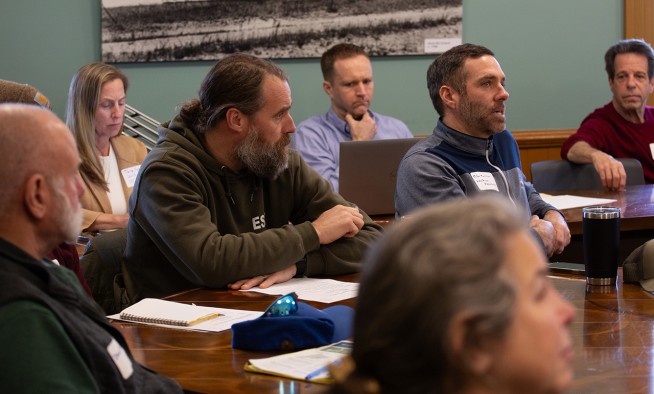Building a 3D GIS Framework for Planning
In the summer of 2016, the Commission embarked on an ambitious project to 3D model every structure on the peninsula and implement a dynamic 3D GIS modeling software that would support the many different visualization and analysis needs of the Commission’s planning team.
The Commission contracted with Bergmann Associates to build a 3D basemap of the Cape with over three-quarter of a million structures built from City Engine modeling software and vendor-purchased models. The model supports interactive, real time visualization and impact analysis of proposed urban and regional development, allowing users to quickly draw building massings, assign uses and compare development impacts on selected indicators.
Using the Commission’s existing GIS infrastructure and technical team, it was important that the data and tool be flexible enough to leverage existing GIS investments and talent.
Most of Cape Cod is dominated by buildings of two stories or less. With few exceptions, the taller buildings were built prior to the 20th Century, and typically as larger residential structures. That history and expected scale is built into town regulations in ways that make conversations about greater density and higher buildings difficult. Yet those are the same restrictions that make investment difficult for developers who want to invest and provide affordable housing and commercial opportunities to encourage effective community growth.
“A vital component in advancing the conversation on greater density is the ability to visualize what that density would look like within the current community environment,” Executive Director Paul Niedzwiecki said. “An interactive 3D framework allows stakeholders to understand scale and density relative to their street, neighborhood and downtown.”
Development scenarios can be modeled for impacts on traffic, parking, jobs, and taxes, to name a few. With fully configurable variables and impacts, the tool is very flexible in measuring the effects of proposed developments against existing baseline metrics that support scenario planning. The tool allows for pre-configured scenarios, while supporting on-the-fly changes during live planning discussions between stakeholders and developers.
“With Esri’s 3D framework we are able to take the plans of our development partners and quickly create representative visualizations, impact analytics and work with our constituents to ensure plans meet the needs of a diverse audience of stakeholders,” Deputy Director Kristy Senatori said.
Earlier this year, Commission GIS Director Anne Reynolds and Community Design Planner Chloe Schaefer attended the Esri Geo Design Summit in Redlands, Calif. where the Cape 3D model was featured in a talk by Bergmann Associates.
“We’re really excited to see how easily we can marry our complex 3D GIS data and supporting planimetric layers with written content describing different scenarios,” GIS Manager Anne Reynolds said.
What in the past may have involved multiple staff managing separate systems of GIS, 3D and Excel is now built into a single easy to use tool that builds upon the Commission’s existing platform.
Related Posts




